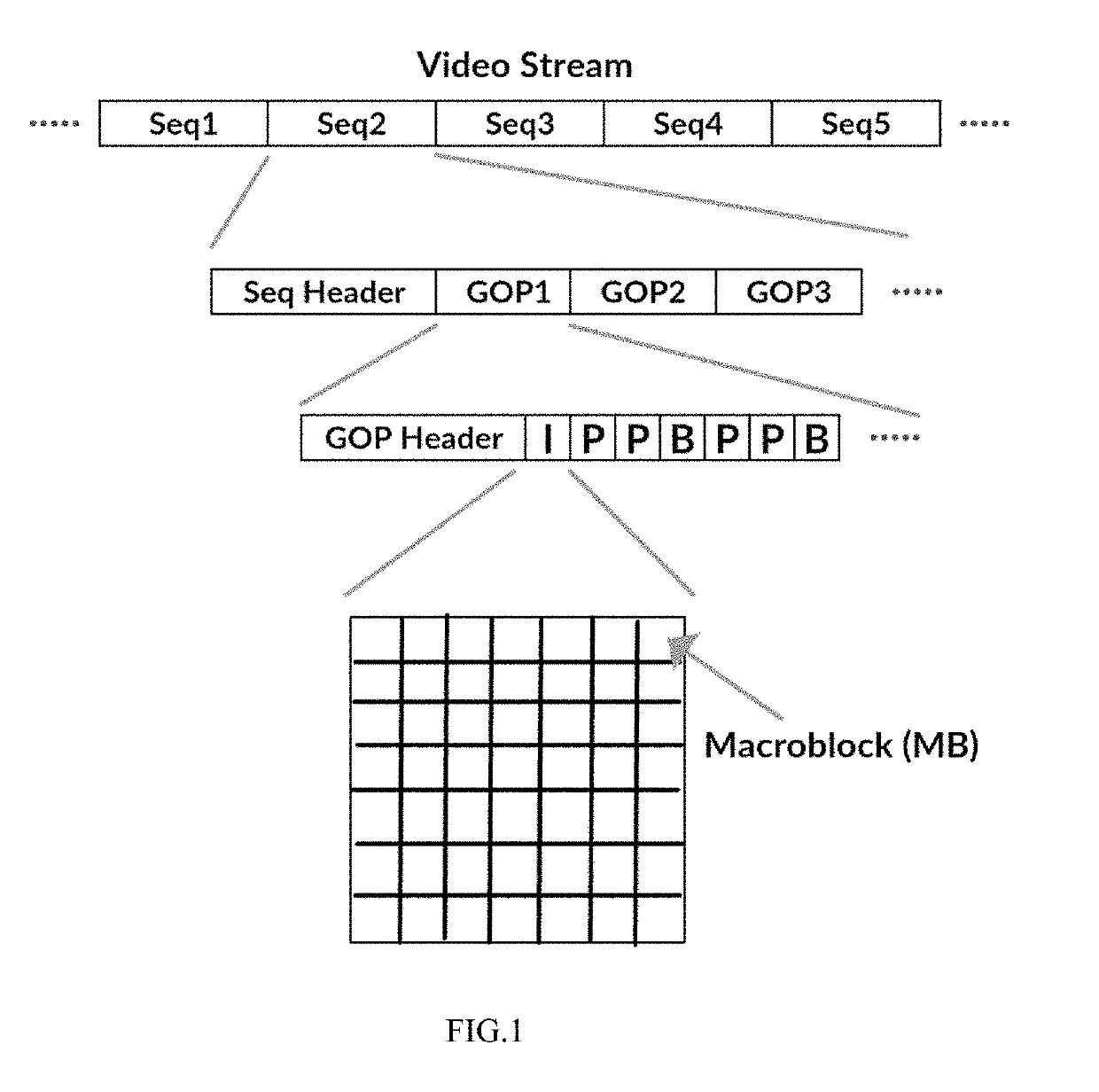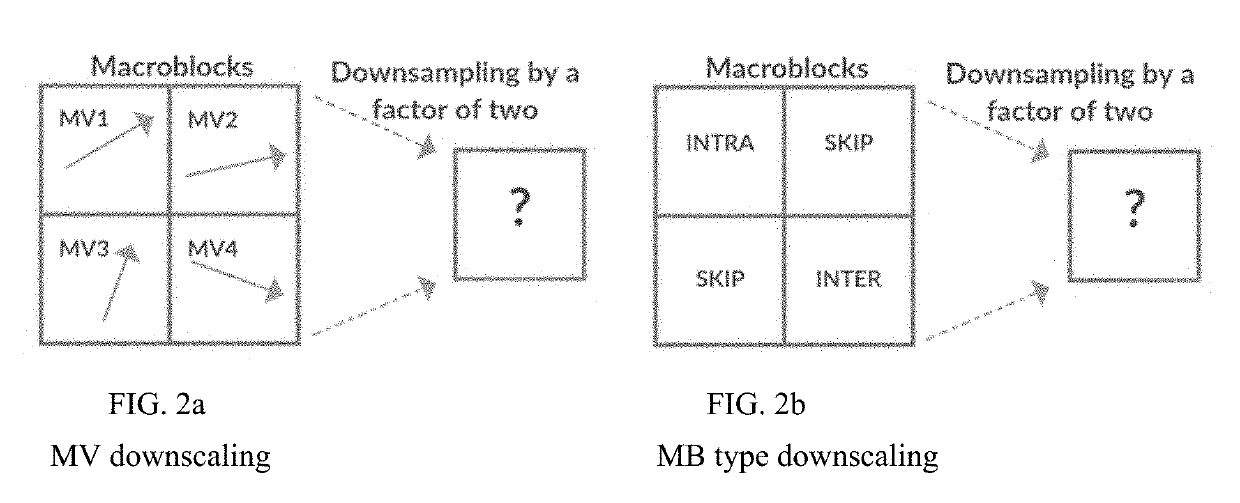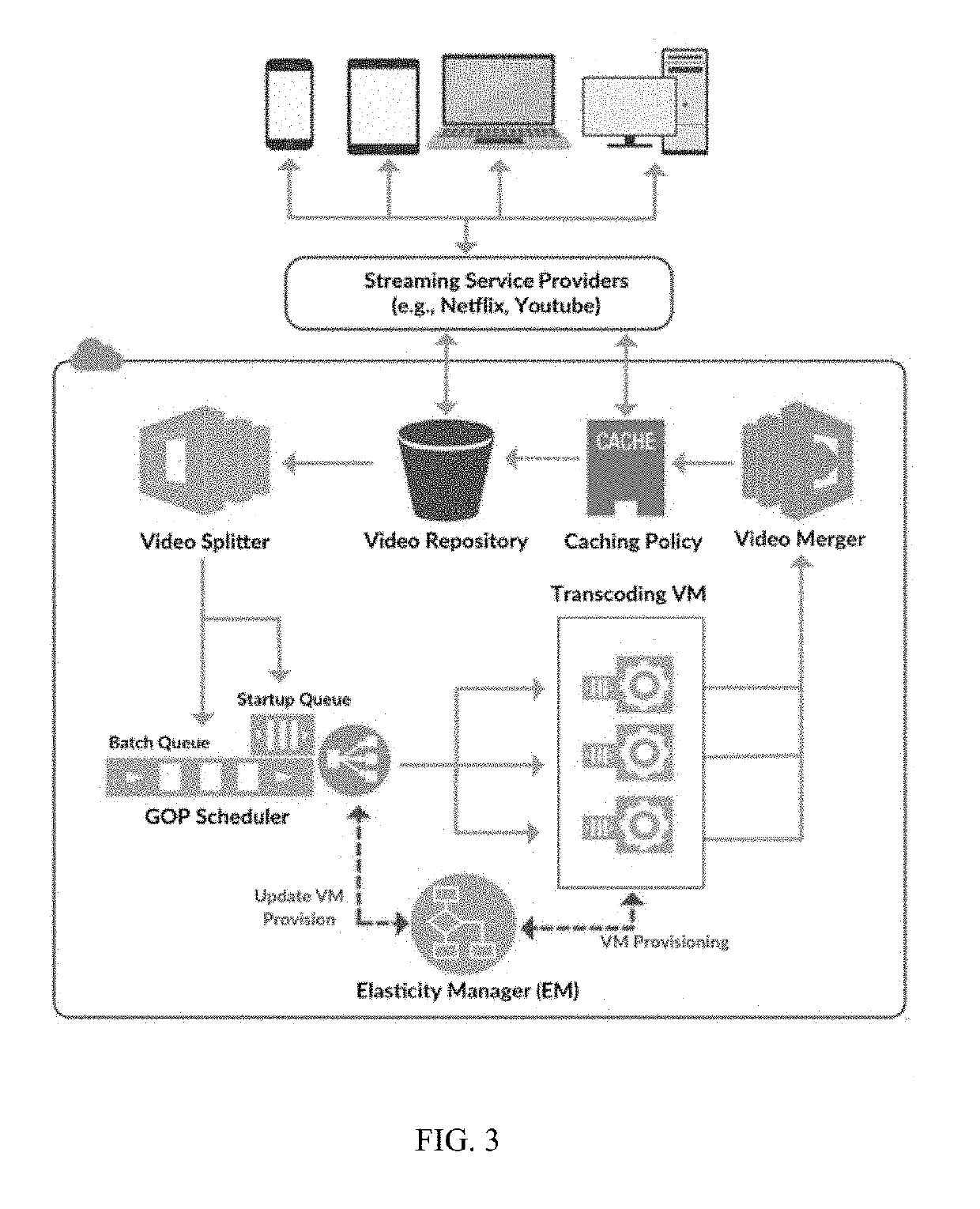System for high performance on-demand video transcoding
a video transcoding and high-performance technology, applied in the field of high-performance on-demand video transcoding, can solve the problems of long transmission and transcoding time, complex and slow processing, and high computational burden of video transcoding, and achieve the effects of minimizing the cost of utilizing cloud resources, reducing the cost of streaming service providers, and improving client qos satisfaction
- Summary
- Abstract
- Description
- Claims
- Application Information
AI Technical Summary
Benefits of technology
Problems solved by technology
Method used
Image
Examples
Embodiment Construction
[0041]An overview of the system of CVSS architecture for on-demand video transcoding in the cloud is shown in FIG. 3. The system shows the sequence of actions taken place when clients request videos from a streaming service provider. The disclosed system includes six main components, namely: video splitter, task (i.e., GOP) scheduler, transcoding virtual machines (VM), elasticity manager, video merger, and caching policy. The cooperation of these components leads to cost-efficient and QoS-aware on-demand video transcoding on the cloud.
[0042]In the video splitter component, each video stream is split into several GOPs that can be transcoded independently. Others have considered several GOPs to construct a transcoding segment. In this case, each transcoding task has to deal with several GOPs. In the preferred embodiment, segments are transcoded with one GOP for more efficient scheduling. As such, in the preferred embodiment, each GOP is treated as a task with an individual deadline. T...
PUM
 Login to View More
Login to View More Abstract
Description
Claims
Application Information
 Login to View More
Login to View More - R&D
- Intellectual Property
- Life Sciences
- Materials
- Tech Scout
- Unparalleled Data Quality
- Higher Quality Content
- 60% Fewer Hallucinations
Browse by: Latest US Patents, China's latest patents, Technical Efficacy Thesaurus, Application Domain, Technology Topic, Popular Technical Reports.
© 2025 PatSnap. All rights reserved.Legal|Privacy policy|Modern Slavery Act Transparency Statement|Sitemap|About US| Contact US: help@patsnap.com



